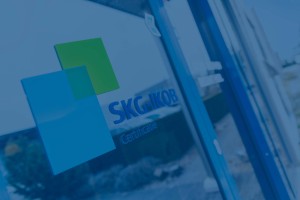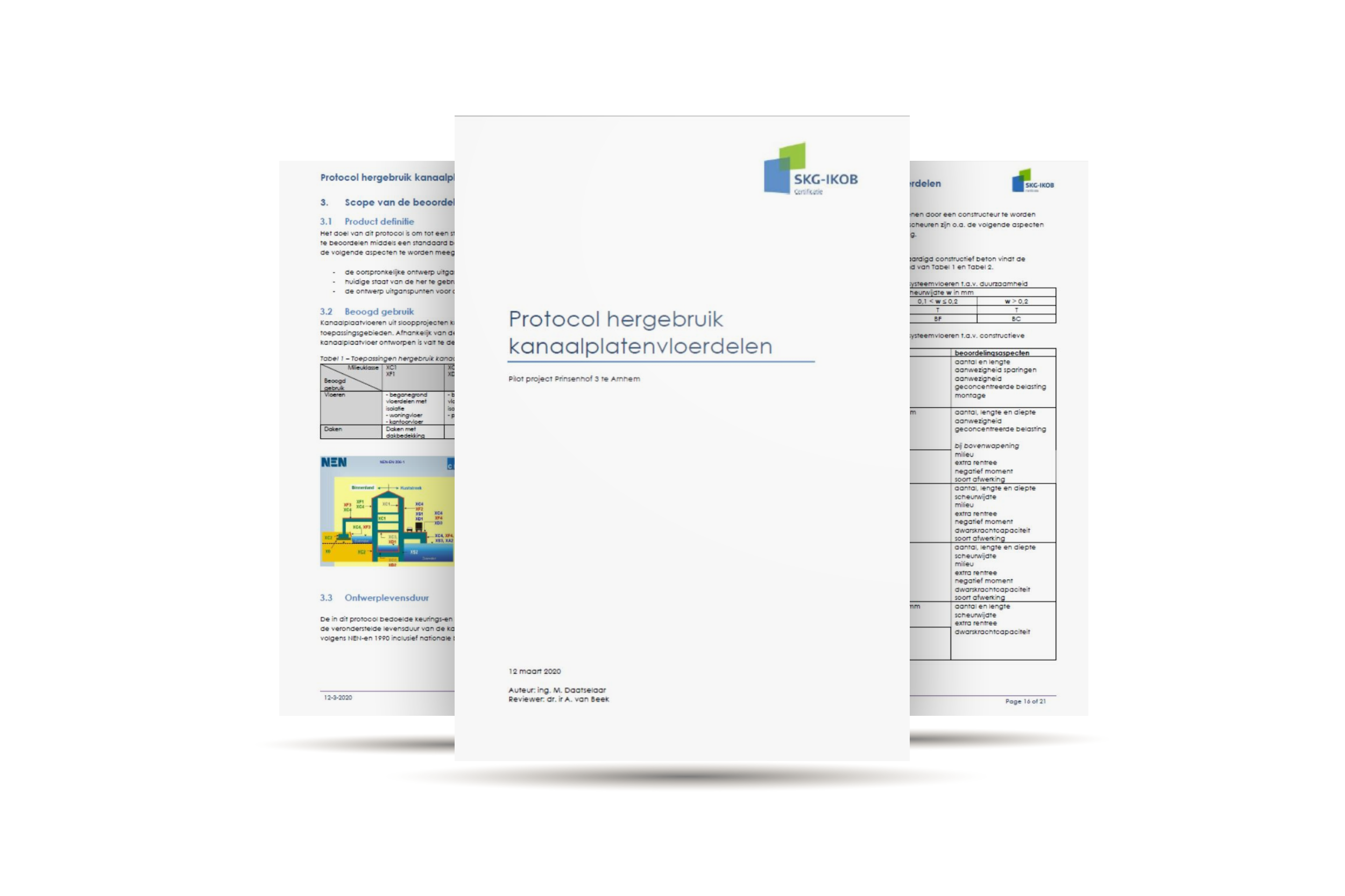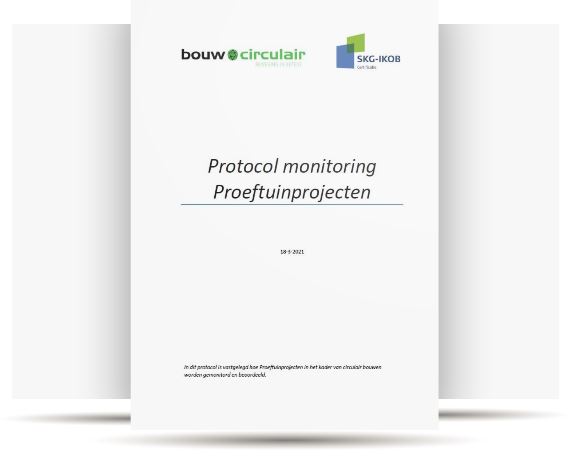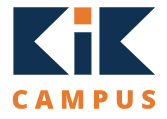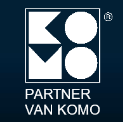Industry labels and recognition schemes
An industry seal of approval encourages members of an industry organization to demonstrate their quality. It can also give the industry a quality boost. As an independent organization for testing and certification in the construction industry, we are your independent partner in developing and verifying industry hallmarks. With an industry hallmark, a member company shows that clients can expect top quality. It ensures distinction in the market.
We can help you
Call 088 244 01 00
Good building starts with SKG-IKOB
- VMRG seal of approval
- FAC seal of approval
- ART mark
- Mechanical security of vehicles and vessels
- VG Glass Hallmark
- Hallmark Roof and Facade Assurance
- ERM - Maintenance and restoration of monuments
- Surface provisions
- Flooring and window covering companies
- Trial protocol circular construction ductile slab floors
- Protocol monitoring Living Lab projects - BuildingCircular
- WoonKeur
VMRG seal of approval
For years, the VMRG has paid special attention to quality control and quality promotion. All VMRG members hold the VMRG quality mark, these companies deliver guaranteed quality. They are checked for it by SKG-IKOB as an independent inspection institute.
Who is VMRG?
The Metal Windows and Facade Industry Association (VMRG) is the trade association for facades and facade elements. For the members, optimal comfort for the end user is central. Through continuous product and process improvement, innovation, training and service, they work to ensure the value of buildings for the long term. For more information, visit https://vmrg.nl/.
What is the VMRG seal of approval?
In the complex and technically advanced world of metal construction, quality is the backbone of every project. It is a differentiating factor that determines not only the integrity and durability of a structure, but also the trust customers place in their suppliers and partners. In this context, the VMRG seal of approval serves as a gold standard. It represents not only a benchmark for quality and workmanship, but also a commitment to innovation and best practices within the industry. It is more than just a certification; it is a testament to commitment to excellence and a promise to customers that they will receive the best that the metal building industry has to offer.
What is the VMRG seal of approval?
The VMRG seal of approval recognizes metal construction companies that meet the highest quality standards in their field. Companies with this seal have proven that they are experts in the field of metal construction and are able to meet all legal and supra-legal standards and regulations. The VMRG logo, prominently displayed by certified companies, is a sign of trust and expertise in the industry.
When you see a company with the VMRG seal of approval, you can rest assured that you are dealing with professionals who understand their business. They follow the VMRG Quality Requirements and Opinions, which are designed to ensure the highest quality standards in the industry. Whether constructing a new building or renovating an existing structure, a VMRG-certified company ensures excellence in every project.
The Benefits of the VMRG Seal of Approval.
The VMRG seal of approval is not just another certification; it is a symbol of dedication, craftsmanship and quality in the metal construction industry. But what exactly does this mean for you as a customer or partner? Here are some of the most notable benefits of choosing a company with the VMRG seal of approval:
- Guaranteed Quality: Companies with the VMRG Seal of Approval meet the strict VMRG Quality Requirements and Opinions. This means that they work to the highest standards in the industry, ensuring you receive a top-quality end product.
- Expertise and Professionalism: The seal of approval is proof of a company's expertise and professionalism. It shows that the company has not only the technical knowledge, but also the experience and skill to handle projects of any size and complexity.
- Sustainability and Innovation: VMRG-certified companies are often forerunners in sustainability and innovation. They use the latest technologies and methods to provide environmentally friendly and energy-efficient solutions.
- Transparency and Reliability: With the VMRG seal of approval, you know you are dealing with a reliable partner. These companies are transparent in their processes, communication and pricing, so you always know where you stand.
- Long-Term Investment: By choosing a company with the VMRG seal of approval, you are investing in the long term. The quality and durability of their work means that you are less likely to encounter long-term maintenance problems or replacement.
In an industry where the smallest details can make all the difference, VMRG certification provides assurance that you are working with the best in the business. Whether you are an architect, contractor, or end user, choosing a VMRG-certified company means choosing reliability, innovation, and unparalleled quality. It is a seal of approval that embodies a commitment to craftsmanship and a passion for metal building. In a world where quality standards are constantly evolving, the VMRG seal of approval symbolizes consistency and excellence at every stage of the construction process. It is a promise to you that every project, large or small, will be completed with the highest standards of professionalism and technical competence.
How VMRG differentiates itself from other labels
There are several labels and certifications available in the construction and metal industry. However, the VMRG seal stands out because of its unique features and benefits. Here's how VMRG stands out from the rest:
- Strict Quality Requirements: The VMRG Quality Requirements and Opinions are designed specifically for the metal construction industry. They are more comprehensive and detailed than many other standards in the industry, providing a higher level of quality assurance.
- Continued Innovation: VMRG is focused not only on maintaining existing standards, but also on encouraging innovation in the industry. The seal of approval is regularly updated to include the latest technologies, methods and best practices.
- Broad Scope: While some labels focus on specific niches or applications, the VMRG label has a broad scope, making it relevant to a wide range of metal building projects and applications.
- Support and Training: VMRG provides not only certification, but also support and training for its members. This ensures that VMRG-certified companies always have access to the latest knowledge and skills.
- Independent Audits: The VMRG seal of approval requires regular, independent audits to ensure that companies consistently meet the requirements set forth. This provides an additional layer of trust and assurance for customers and partners.
- Industry Recognition: Thanks to its reputation and rigorous standards, the VMRG seal of approval is widely recognized and respected in the industry. Choosing a VMRG-certified company is a sign of quality and reliability.
In a world where quality and reliability are critical, the VMRG seal of approval offers a clear distinction. It is not just another seal of approval; it is a promise of excellence in metal construction.
What does VMRG mean for clients, architects and other stakeholders?
The VMRG seal of approval is not only an indicator of quality for companies within the metal construction industry, but it also has profound meaning for all those involved in construction projects. Here is what the VMRG seal of approval means to various stakeholders:
- For Clients:
- Assurance of Quality: Choosing a company with the VMRG seal of approval means you are working with an organization that meets the highest industry standards.
- Sustainability: VMRG-certified companies are committed to sustainable construction practices, resulting in projects that are both environmentally friendly and cost-effective.
- Transparency: Thanks to VMRG's strict requirements and regular audits, clients can follow the project progress with confidence, knowing that all standards are met.
- For Architects:
- Innovative Solutions: VMRG encourages innovation within the industry, which means architects have access to the latest technologies and construction methods when working with VMRG-certified companies.
- Collaboration: The VMRG seal of approval promotes collaboration and communication, allowing architects and construction companies to work together effectively to bring the project's vision to life.
- Aesthetics and Functionality: With VMRG's quality assurance, architects can be confident that their designs are not only aesthetically pleasing, but also functional and durable.
- For Other Stakeholders:
- Reliable Partnership: Suppliers, subcontractors and other partners can trust that a VMRG-certified company is reliable and professional in all business transactions.
- Education and Training: VMRG offers regular training and seminars, meaning that all stakeholders have access to ongoing educational opportunities.
- Networking opportunities: Being part of the VMRG community allows stakeholders to network with leading industry professionals, which can lead to new business opportunities.
In short, the VMRG seal of approval is more than just a certification for metal construction companies. It is a sign of quality, reliability and professionalism that adds value for everyone involved in a construction project.
Frequently Asked Questions (FAQ)
What are the VMRG Quality Requirements and Opinions?
The VMRG Quality Requirements and Opinions are a set of standards and guidelines established by VMRG to ensure the highest quality standards in the metal construction industry. These requirements cover everything from material selection to installation procedures, ensuring that VMRG-certified companies always provide the best services.
How can a company obtain the VMRG seal of approval?
To obtain the VMRG seal of approval, a company must meet the strict VMRG Quality Requirements and Opinions. In addition, the company must undergo regular audits and inspections to ensure they consistently meet these high standards.
Is the VMRG seal of approval internationally recognized?
Although the VMRG seal of approval is specific to the Netherlands, it is recognized as a sign of quality within the international metal building community.
What is the difference between the VMRG label and other labels in the construction industry?
The VMRG seal of approval is aimed specifically at the metal construction industry and emphasizes both quality and sustainability. It is distinguished by its strict requirements and emphasis on continuous improvement.
Conclusion
The VMRG seal of approval symbolizes quality, reliability and innovation in the metal construction industry. For companies, this seal represents recognition of their craftsmanship and commitment to excellence. For customers and partners, it provides a guarantee that they are working with an organization that meets the highest industry standards.
Whether you are a construction professional, an architect, or someone considering using metal building services, the VMRG seal of approval is a sign you can trust. For more detailed information about VMRG and the seal of approval, we invite you to visit the official VMRG website.
Who can I ask for more information from?
For more information, please contact:
FAC seal of approval
FAC constructors guarantee quality in aluminum joinery. When they meet the established quality requirements, they receive the FAC quality mark as official recognition.
Who is FAC?
The Federation of Aluminum Constructors (FAC) was the first Belgian organization to provide its customers in the aluminum sector with a quality guarantee. Architects, contractors, clients, the government and suppliers can therefore count on guaranteed quality. Visit https://www.fac-belgium.eu/ for more information.
What is the FAC seal of approval?
FAC launched the FAC quality label for the Belgian market in early 2016. After examination in the factory and on the construction site by an independent inspection body such as SKG-IKOB, the quality label is awarded to aluminum processing companies.
The quality manual "Quality Requirements and Advice" is the basis of the FAC quality label. This book contains clear production rules and criteria and is regularly adapted to current regulations and market requirements. It guides the aluminum fabricator to quality production, installation, delivery and so on, of aluminum joinery (fine carpentry). Thus, the quality level of the industry is standardized and systematically increased.
Who can I ask for more information from?
For more information, please contact:
ART mark
Most insurance companies require an ART MBT-04 approved lock when taking out theft insurance for a two-wheeler. SKG-IKOB tests two-wheeler locks in accordance with the ART hallmark. It was developed to distinguish the better prevention devices.
Who is ART?
The ART Foundation is committed to preventing theft of two-wheelers through more and better prevention. The ANWB, BOVAG, RAI and insurers are represented in the ART foundation. You can find more information about the ART mark at www.stichtingart.nl.
What do we test?
SKG-IKOB tests bicycle locks in accordance with the ART mark. We also test mechanical vehicle security devices in accordance with the inspection regulation MP03 of the VbV (Verzekeringsbureau Voertuigcriminaliteit). These include caravan and trailer locks, wheel clamps, gearbox locks, but also outboard motors and (sea) container locks.
Who can I ask for more information from?
For more information, please contact:
Mechanical security of vehicles and vessels
When, as a company or organization, you invest in prevention measures, you want assurance about their quality. After examination by an independent inspection body such as SKG-IKOB, the hallmarks of the Center for Crime Prevention and Safety guarantee that quality.
Who is CCV?
The Center for Crime Prevention and Safety (CCV) is an independent foundation that identifies and helps solve security problems. Prevention is always the starting point. Learn more at https://hetccv.nl/.
What is the CCV Vehicle Security Hallmark?
The CCV Vehicle Security Hallmark from the CCV stands for quality of built-in security, such as alarm systems or vehicle tracking systems. It also illustrates the professionalism of the personnel and the way they perform their work. Any installation company that meets the quality requirements may call itself a 'CCV vehicle security installation company'.
What is the CCV Mechanical Security Inspection Regulations?
The Vessel Security locks list was part of the Vessel Security Seal of Approval. Currently it is not possible to establish proper certification requirements for vessel security, so the mark has been dropped. The locks list has remained, but is no longer maintained, no new locks are being inspected for vessel security.
A part of the locks list consists of locks inspected according to the VbV inspection regulation for mechanical security (MP03) that was valid until April 2019. This regulation is now called CCV Inspection Regulation for Mechanical Security and applies to outboard motor locks. Mechanical security systems for boats are not vehicle-specific and therefore cannot be registered to a particular vehicle. No certificate is issued with this type of system. Approved mechanical security systems are labeled "SCM approved.
Who can I ask for more information from?
For more information, please contact:
VG Glass Hallmark
VG-Glas Keurmerk is a hallmark specifically intended for the entire glass industry. All glass companies (both members and non-members of Vakgroep GLAS) can obtain the hallmark. With the hallmark, Vakgroep GLAS makes the connection to the Building Quality Assurance Act. The hallmark goes further than just the Buildings Decree requirements; the NEN 3569, for example, is applied as standard by the holders of the hallmark. The holders of the quality mark are inspected by SKG-IKOB as an independent inspection institute.
Who is Vakgroep GLAS?
Vakgroep GLAS is the trade association for companies active in the flat glass industry. Vakgroep GLAS promotes the collective interests of its members in the social and technical fields. It also provides them with a variety of information. Vakgroep GLAS is the first point of contact for employers active in the flat glass sector. For more information visit Vakgroep Glas - Bouwend Nederland.
What is the VG-GLAS Seal of Approval?
The basis for the hallmark is laid in the Quality Requirements VG-Glas. These quality requirements are the result of the initiative of the Vakgroep GLAS to set up a hallmark for the installation of glass for companies such as glaziers, glass producers and glass dealers. Components of this hallmark include professional competence, safety, quality and environment. These quality requirements are periodically reviewed by the Technical Committee of Vakgroep GLAS and adapted (if necessary) to the applicable standards and guidelines. An approved company can be recognized by the Glaskeur logo. You can find more information on Vakgroep Glas - Bouwend Nederland.
Who can I ask for more information from?
Hallmark Roof and Facade Assurance
The Roof and Facade Security Seal of Approval is a seal of approval specifically for members of industry association Dumebo DWS. All members must obtain the quality mark. With the quality mark, Dumebo DWS makes the connection with the Building Quality Assurance Act. Among other things, the quality mark demonstrates that the technical requirements of the Building Code are met. The holders of the quality mark are inspected by SKG-IKOB as an independent inspection institute.
Who is Dumebo DWS?
Dumebo DWS is the trade association for specialty contractors for metal roof and facade systems and the starting point for designing and building with metal facade and roof systems. For more information, visit https://dumebo-dws.nl/.
What is the Roof and Facade Security Seal of Approval?
The basis for the seal of approval is provided by the Metal Facades and Roofs Quality Guideline. The Quality Guideline was developed by manufacturers and specialist contractors of metal roof and wall systems and is continuously updated. The Quality Guideline describes the requirements for roof and wall systems and how they should be constructed. Components of this quality mark include professional competence, safety, quality and environment. An approved company can be recognized by the Dak- en Gevelborg logo. Visit https://dumebo-dws.nl/ for more information.
Who can I ask for more information from?
ERM - Maintenance and restoration of monuments
If your company is active in the restoration industry, it is well worth taking the step towards certification. After all, as a recognized ERM-certified company, you offer clients the assurance that you stand for delivering craftsmanship and uniform quality.
What we certify
Who is ERM?
ERM stands for Stichting Erkende Restauratiekwaliteit Monumentenzorg (Foundation Recognized Restoration Quality for the Preservation of Monuments). With a certificate you show in black and white that your company works according to the generally recognized guidelines for restoration quality in monument conservation. ERM manages the assessment and implementation guidelines as established by the Central Board of Experts Restoration Quality. For more information, visit www.stichtingerm.nl.
What is the ERM restoration quality logo?
Recognized companies may display the ERM logo Restoration Quality. Independently and objectively tested by experts from SKG-IKOB. With this, these companies show that they meet the quality requirements set for skilled restoration companies.
Who can I ask for more information from?
For more information, please contact:
- Erik Kampman - e.kampman@skgikob.nl
- Patrick Bart - p.bart@skgikob.nl
Surface provisions
Together with the industry association Vm2, SKG-IKOB has developed the recognition scheme "Area Determinations". The recognition scheme tests whether the determination of area is carried out correctlySince measurement differences can have a major impact on valuations or rental income, careful determination and recording is very relevant. The accreditation scheme gives clients certainty that a measurement has been carried out correctly and prevents discussion afterwards. We issue the certification and perform the inspections.
Who is Vm2?
Trade association Vm2 is committed to improving the quality of floor area measurements in the Netherlands. Its members produce certified measurement reports. The standard is an initiative of the association and contains requirements that a measurement report and measurement certificate must meet. For more information, visit www.verenigingdevierkantemeter.nl/.
What is the accreditation scheme Surface Provisions?
The accreditation scheme 'Surface Provisions' was created in cooperation with the industry association Vm2. It is the basis for the independent control that SKG-IKOB carries out in the form of office audits and checks at measurement sites. This form of certification is a quality guarantee with which we together bring the quality in the industry of surface measurements to a higher level. Members of the association must be certified on the basis of the recognition scheme.
Who can I ask for more information from?
For more information, please contact:
Jaap Vermeer
Flooring and window covering companies
Project furnishers and upholsterers can be recognized under the PPI Recognition Scheme. The hallmark is the standard for quality assurance and initiative of the Branche Vereniging Projectinrichting BVP. Companies that meet the hallmark demonstrate their craftsmanship by working according to guidelines that guarantee quality.
Who is BVP?
Branche Vereniging Projectinrichting (BVP) is the Dutch trade association for project design and project upholstery. With the PPI seal of approval, the association pays close attention to sustainability. For more information, visit https://www.bvprojectinrichting.nl/.
What is the PPI seal of approval?
The PPI seal of approval is awarded to companies that operate according to strict requirements and standards. The recognition focuses primarily on the quality and professionalism of member companies. Most PPI companies are also ISO 9001 certified. With the quality mark, they offer clients and customers extra security and guarantees.
SKG-IKOB drew up the PPI regulations and the implementation guideline (URL) in cooperation with the Platform Project furnishing and supervises the monitoring of quality. We carry out unannounced and random inspections, allowing the recognized companies to monitor their quality. Learn more: https://www.bvprojectinrichting.nl/ppi-keurmerk/.
Who can I ask for more information from?
For more information, please contact
Trial protocol circular construction ductile slab floors
In the context of circular construction and reuse of raw materials, SKG-IKOB Certification was commissioned by the National Property Administration to draw up a protocol for the reuse of hollow-core slab floor components from the demolition of existing buildings.
Other links
What is the pilot protocol for circular construction ductile slab floors?
Who can I ask for more information from?
The use of the protocol by third parties is encouraged by the Government Real Estate Agency, however, it is requested to contact them in advance:
Protocol monitoring Living Lab projects - BuildingCircular
In the context of circular construction and reuse of raw materials, BouwCirculair B.V. commissioned SKG-IKOB certification to draft a generic protocol for monitoring of Living Lab projects.
Other links
What is the protocol monitoring Living Lab projects - BuildingCircular?
In the context of circular building and reuse of raw materials, BouwCirculair B.V. has commissioned SKG-IKOB certification to draw up a generic protocol for the monitoring of Living Lab projects. The purpose of this protocol is to determine whether products and raw materials that promote circularity and/or contribute to a better environmental profile provide the same or better technical performance than traditional solutions.
Living lab projects will be carried out in such a way that a comparison is made with the traditional way of building. This can be done by carrying out part of the project using traditional products and/or raw materials and part of the project using circular products and/or raw materials.
The Living Lab project should make a potential contribution to the (inter)national objective for circularity and reduction of C02 emissions.
Read more in the article from BouwCirculair.
Who can I ask for more information from?
For more information, contact
WoonKeur
Homes that have quality of use and are accessible, flexible and adaptable can receive the WoonKeur certificate for residential technical quality. Such a home is life-cycle-proof: the occupant can continue to live there even if he or she becomes disabled. WoonKeur is supported by leading housing consumer organizations and interest groups and is hosted by SKG-IKOB.
What does the WoonKeur inspection certificate entail?
SKG-IKOB secures the procedure and quality of WoonKeur in accordance with the BRL 5012. A practice panel with professionals from the industry ensures the best possible application of the requirements in design and construction practice.
The content of the requirements package is laid down in the WoonKeur Handbook and is monitored and kept up to date by a Board of Experts. You can work with two different packages.
What does WoonKeur New Construction entail?
Currently, the requirements in the 2015 WoonKeur Handbook apply to new construction homes. This new handbook includes both the requirements packages for WoonKeur New Construction and WoonKeur existing homes.
Requirements
The requirements in the WoonKeur Manual for new construction homes are above the level of the Building Code, because the Building Code only stipulates the legal minimum requirements. The set of requirements of WoonKeur New Construction is structured as follows:
- Basic Package
- Part 1: Design requirements for dwellings and residential buildings
- Part 2: Implementation requirements for dwellings and residential buildings
- Plus Package Living with Care
The requirements in the Basic Package WoonKeur New Construction apply to every home and project. It should be noted, however, that requirements for the residential building naturally only apply when there is a residential building (in the case of apartments). The requirements of the Plus Package are always additional to the requirements in the Basic Package. Thus, it is not possible to apply for only the Plus Package for a residence or project.
Since the 2011 edition, the WoonKeur handbook is no longer a loose-leaf clapper, but a book in A4 format. Until 2013, WoonKeur's requirements were published on the WoonKeur website. This has not been the case since then.
As of 2015, the handbook includes the requirements packages for both WoonKeur New Construction and WoonKeur Existing Homes. You can order the WoonKeur handbook (hardcopy) or you can order the requirements packages as different modules (in pdf files).
Design requirements package
In the design of the requirements package, a connection was sought with construction practice. The requirements are therefore divided into requirements that are important for the architect (the Design Requirements) and requirements that are especially important during construction (the Execution Requirements). Of course, there are also requirements that are important to both parties; references to these are made in the text. A chapter entitled 'Explanation of the requirements' has also been added - similar to that in the Building Code - with the purpose of the requirement in question for each article plus other background and practical information. In terms of numbering, the chapter 'Execution requirements' follows the division according to STABU (standard specifications), which is widely known in the construction industry.
Plus Package Living with Care
The requirements in the Plus Package are additional to the requirements in the Basic Package WoonKeur New Construction. WoonKeur Nieuwbouw has one plus package, the Plus Package Living with Care. In the Basic Package of WoonKeur New Buildings the durability for life is already taken into account. This means, among other things, that a resident can continue to live in his home even if he needs to use aids such as a walker or manual wheelchair. However, when a resident becomes more or more severely disabled and requires personal care by a caregiver, the Living with Care Plus Package provides for this. The Living with Care Plus Package takes into account a resident in a manual wheelchair and/or using a mobility scooter and the use of a hoist for assistance.
What does WoonKeur Existing Homes entail?
Currently, the requirements in the 2015 WoonKeur Handbook apply to existing homes. This new handbook includes both the requirements packages for WoonKeur New Construction and WoonKeur existing homes.
Requirements
WoonKeur Bestaande Woningen consists of two certificates, each with its own character. The requirements for them apply to homes older than 10 years.
They cover practical usability, safety and comfort for the home and - to the extent applicable - for the building of which the home is a part:
- Certificate C 'walker capable'
- Certificate D 'wheelchair capable'
Because it is not always possible to implement high requirements in existing homes, two levels have been chosen in the requirements package. It will often be the spatial possibilities and dimensions of rooms that determine which certificate level can be achieved. Another consideration for a particular certificate may be the intended target group of residents.
The two certificates
The certificates are made up of requirements, which make it possible for a resident to continue living in their home for longer. The requirements relate to practical usability, safety and comfort for the home and - as far as applicable - for the residential building.
- certificate C 'walker capable'
The requirements in the Certificate C package mean that the home is practical and comfortable in everyday use, and that the risk of accidents is limited, such as tripping over thresholds, falling down stairs and slipping in the bathroom. Even when the resident has to start using a walker, the home remains suitable, because there is sufficient space for this in the hall, in the bathroom, in the bedroom and on a balcony, among others. A home with certificate C is basically suitable for any resident, even if they use a walking aid, such as canes, crutches, a walker or a walker.
- certificate D 'wheelchair capable'
The requirements in the Certificate D package make the home life-proof. Like a home according to the requirements of Certificate C, the home is practical and comfortable to use. In a Certificate D home, residents can still continue to live if they become more severely physically disabled. This is because living room, bedroom and bathroom are required on the same floor, and more space is provided in and near the home in essential places.
This means that the home is suitable for any resident, even if they must use a walking aid or a wheelchair.
What does the certified WoonKeu advisor do?
With the help of the WoonKeur Existing Homes Handbook, the WoonKeurad advisor examines how people can continue to live at home for longer. This can often be done without unnecessary investments if the resident is aware of it in time. The advisor helps with conscious choices to focus resources and is the link between resident, owner and government. The method is certified by SKG-IKOB.
The consultant efficiently records the work via a digital standardized method in a clear report that is checked by SKG-IKOB. You can obtain the certificate WoonKeuradviseur if you successfully pass the exam after the three-day course.
Where do I order the WoonKeur handbook?
The WoonKeur Handbook contains requirements for both new construction and existing homes. It contains six modules: four modules from the requirements package WoonKeur New Construction and two modules on the requirements WoonKeur Existing Houses. Read more about the contents of the handbook here.
The WoonKeur handbook is available online in BRISwarenhuis with direct links to the relevant Building Code articles.
You can also order the handbook as a hardcopy, separate modules can also be purchased.
Table WoonKeur requirements package
|
WoonKeur Handbook 2015 |
|
Module 1 WoonKeur New Construction, Basic Package, Part 1 Design Requirements |
|
Module 2 WoonKeur New Construction, Basic Package, part 2 Requirements for execution, construction part (STABU 15 to 47) |
|
Module 3 WoonKeur New Construction, Basic Package, part 2 Requirements for construction, installations section (STABU 52 to 80) |
|
Module 4 WoonKeur New Construction, Plus Package Living with Care |
|
Module 5 WoonKeur Existing Homes, Requirements certificate C 'walker suitable' |
|
Module 6 WoonKeur Existing Homes, Requirements certificate D 'wheelchair suitable' |
WoonKeur New Construction - Sign up
How do you register a project?
First of all, a distinction is made between two different possibilities. Namely, you can register a project with SKG-IKOB (further: SKG) for:
- Inspection certificate WoonKeur New Construction
- Quick test Feasibility WoonKeur New Construction
Application forms
- Application form Inspection Certificate Woonkeur New Construction
- Application form Quick test feasibility Woonkeur Nieuwbouw
How does the review process work next?
1. Review procedure Inspection Certificate WoonKeur New Construction.
A project submitted for the Inspection Certificate WoonKeur New Construction follows a formal inspection by SKG. This inspection consists of tests at two different points in the development of a project:
a. Testing plan phase:
This testing takes place on the basis of the requirements (basic package and any requested plus package) on the basis of the supplied construction drawings and other technical data of the project. SKG-IKOB draws up an assessment report and sends the result to the client. A second re-assessment, after plan changes that prove necessary for certification of WoonKeur Nieuwbouw, is possible.
b. Completion phase inspection:
Around the time of the construction delivery of the project, an appointment will be made to perform the WoonKeur New Construction completion inspection on site. SKG performs the inspection on the requirements of the Basic Package, any requested Plus Package. SKG-IKOB draws up a test report of the completion inspection and sends the result to the client.
If the inspection shows that the construction does not (entirely) meet the requirements, the client will be given the opportunity to make improvements. This will be followed by a second WoonKeur New Build inspection on location. After approval of all requirements the inspection certificate WoonKeur New Building will be granted. The certificate will be issued per dwelling that meets the requirements. It is therefore possible that in a project certain homes do not obtain the certificate.
2. Assessment procedure Quick test feasibility WoonKeur New Construction
When a project is still in an early design stage, an assessment can already be requested from SKG: the Quick Check feasibility. Tested is whether on the basis of the supplied data it can be indicated whether the inspection certificate WoonKeur New Building is feasible. For a project submitted for a Quick Check feasibility, sketches or a preliminary design can be supplied. Review at an early stage has the advantage that changes in the design can be implemented more easily. For a project that is completely fixed in final specification drawings, necessary changes can prove costly. SKG will draw up a written report, which will be sent to the client within ten working days after receipt of the complete application. The report will also indicate points of attention that may be helpful in the further development of the building plan. The quick test feasibility is not involved in the formal assessment procedure for the inspection certificate WoonKeur New Buildings. However, it is possible -after a favorable result of the Quick test feasibility- to apply for the inspection certificate WoonKeur New Building. In case it is decided to apply for the full Inspection Certificate WoonKeur New Building after the Quick Check has been performed, the full costs of the Quick Check feasibility will be deducted from the applicable fee.
Rates WoonKeur New Construction
Costs for certification can be obtained from SKG. The costs depend strongly on the size and variety of a project. Of importance then is, among other things, whether there are different housing types or a residential building.
On the fee sheet, costs are broken down for:
Certification WoonKeur New Construction:
- test planning phase
- test delivery phase
- Quick test feasibility WoonKeur New Construction
For both phases of the WoonKeur certification and the Quick Test feasibility, separate rates are included for the Basic Package and for the Plus Package Living with Care.
WoonKeur Existing Homes - Sign up
How do you register a project?
First of all, a distinction is made between two different possibilities. Namely, you can register a project with SKG-IKOB (further: SKG) for:
- Inspection certificate WoonKeur Existing homes
- Quick test Feasibility WoonKeur Existing homes
Application forms
- Application form Inspection Certificate WoonKeur Existing Houses
- Application form Quick test feasibility WoonKeur Existing homes
How does the review process work next?
1. Review procedure Inspection Certificate WoonKeur Existing Houses
A project submitted for the WoonKeur Inspection Certificate follows a formal inspection by SKG. The formal inspection by SKG consists of testing at two different points in a project's development:
a. review of plan phase:
This review takes place on the basis of the requirements based on the supplied construction drawings and other technical data of the project. SKG draws up a test report and sends the result to the client. A second re-assessment is possible after changes in the plan that appear necessary for WoonKeur certification.
b. test completion phase:
Around the time of the structural completion of the project, an appointment will be made to perform the WoonKeur completion inspection on site. SKG will perform the inspection on the requirements as stated in the WoonKeur handbook. SKG will prepare a report of the completion inspection and send the results to the client.
If the inspection shows that the construction does not (entirely) meet the requirements, the client will be given the opportunity to make improvements. This will be followed by a second WoonKeur inspection on location. After approval of all requirements the inspection certificate WoonKeur Existing Houses will be granted.
2. Review procedure Quick test feasibility Existing dwellings
When a project is still in an early stage of development, an assessment can already be requested from SKG: the Quick test feasibility. Tested is whether on the basis of the supplied data it can be indicated whether the certificate WoonKeur Bestaande woningen is feasible.
For a project submitted for a Quick Check, sketch drawings or a preliminary design can be supplied. A quick test is also possible in the context of a feasibility study of the future value of existing housing complexes, for example in the context of strategic stock management.
Review at an early stage has the advantage that design changes can be made even more easily. For a project that is completely fixed in final specification drawings, necessary changes can be costly.
SKW will draw up a written report, which will be sent to the client within ten working days after receipt of the complete application. The report will also indicate points of interest that may be helpful in the further development of the building plan.
The Quick test feasibility is not involved in the formal assessment procedure for the Inspection Certificate WoonKeur Existing Houses, although it is possible -after a favorable result of the Quick test feasibility- to apply the project for the Inspection Certificate WoonKeur Existing Houses.
If after the performed Quick Test it is decided to apply for the full Inspection Certificate WoonKeur Existing Houses, the full costs of the Quick Test feasibility will be deducted from the applicable rate.
Rates WoonKeur Existing Homes
Costs for certification can be obtained from SKG. The costs depend strongly on the size and variety of a project. Of importance then is, among other things, whether there are different housing types or a residential building.
On the fee sheet, costs are broken down for:
Certificate C ("walker capable"):
Certification WoonKeur Existing Homes, Certificate C:
- test planning phase
- test delivery phase
- Quick test Feasibility WoonKeur Existing Homes, Certificate C
Certificate D ("wheelchair suitable"):
Certification WoonKeur Existing Homes, Certificate D:
- test planning phase
- test delivery phase
- Quick test Feasibility WoonKeur Existing Homes, Certificate D
If you have other requests, such as a consultation or an on-site survey, please contact SKG.
Who can I ask for more information from?
For more information, please contact:
Didn't find what you were looking for?
Try our smart filter. Here you search the website by any topic and find out what SKG-IKOB does and knows within this.
Latest News
We will keep you informed of all developments in the industry
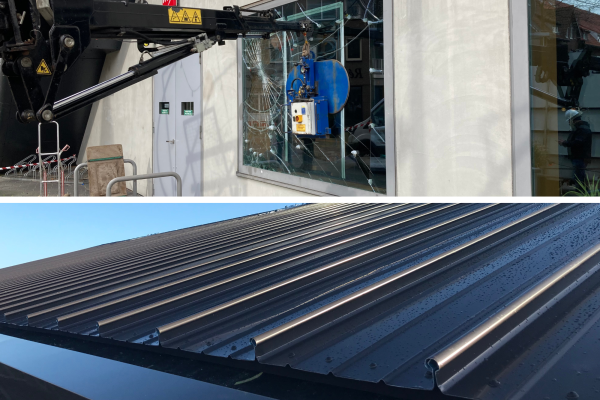
Expansion of the scope of SKG-IKOB's branch approvals
The Building Quality Assurance Act (Wkb) requires the market to make it even more transparent and demonstrable that at least the requirements of the Building Code are met. A quality assurance company checks this on behalf of the client. This is done using an assurance instrument at building level. This law gives contractors more responsibility for the quality delivered. The new system requires that participants in the construction process deliver demonstrable quality.
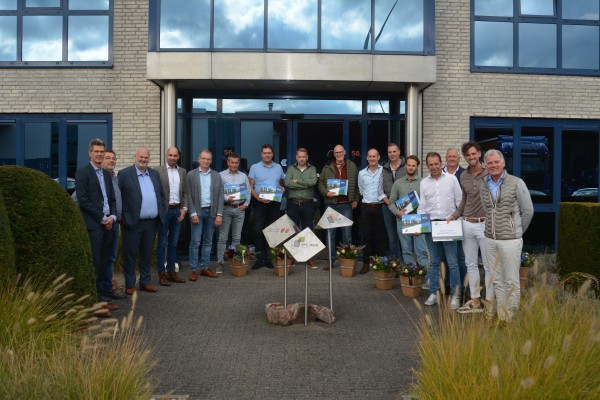
Issuance of first Roof and Facade Safety Mark certificates for processors
Dumebo-DWS, the branch group of processors of roof and facade systems of Koninklijke Metaalunie, in cooperation with borger PlanGarant and certifying body SKG Ikob, has presented the Hallmark Roof and Facadeborg. Keurmerk Dak- en Gevelborg makes it possible for processors of roof and facade material to demonstrate the quality achieved in the field of roof and facade construction. This ties in very well with the Building Quality Assurance Act (Wkb), which is expected to take effect January 1, 2023.
Our colleagues will be happy to help you

Ard van de Meeberg
Sector Coordinator